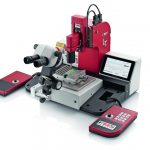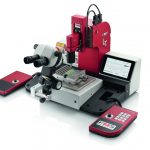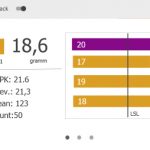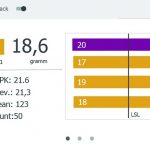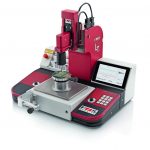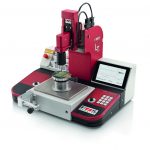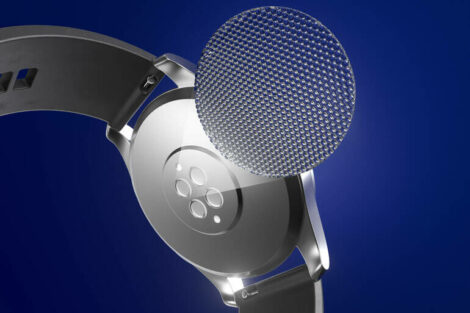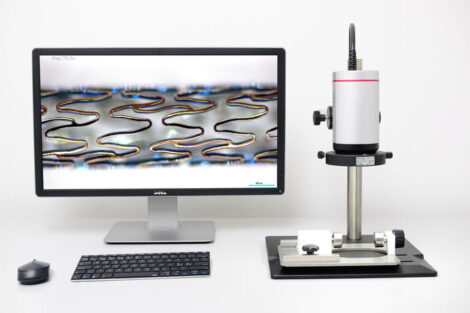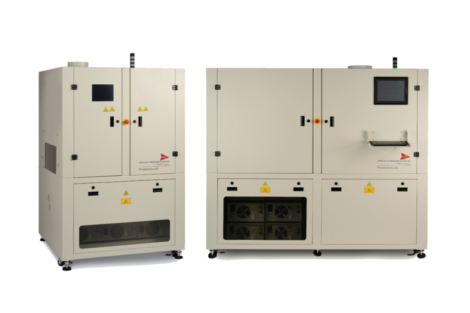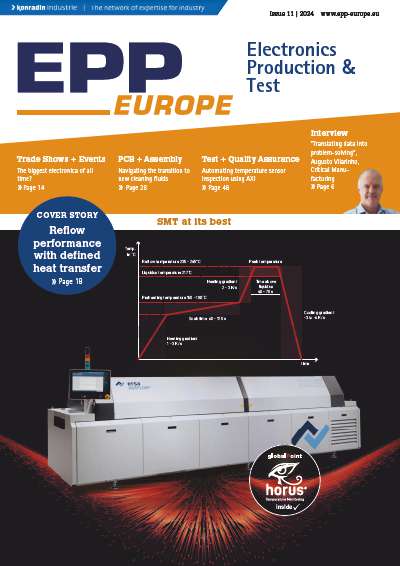F&S Bondtec Semiconductor GmbH from Austria’s Braunau is breaking with tradition in the industry and taking a completely novel direction in its product portfolio and sales concept. The new high-quality wire bond pull tester for less than half the common market price is the company’s answer to the market’s call for state-of-the-art, but economical testing equipment – introducing the F&S Bondtec Labtester. With only one week for delivery, the company outclasses all other offerings in the market.
For more than 40 years, testing standards have required the testing of wire bonds, especially by pull tests. The internationally accepted MIL standard 883, ASTM F458/459, and the DVS guidelines 2811 (newest issue published by BeuthPress in 02/2017) all require pull tests to record, monitor, and statistically prove pull forces to ascertain that certain thresholds are maintained. Every user – SMEs, universities, research institutions, corporate research departments – have to fulfill these standards whenever wire bond technology is involved. They need powerful equipment to conduct these tests, often while working with definite cost constraints. Typical pull testers require investments of €25 k to €40 k. Optional extras, for automation or more complex data processing, can easily increase the costs to €50 k to €60 k. A far cheaper option, at around €1,000, is offered by simple spring scales to estimate pull strengths. However, the actual benefit in terms of reliable quality assurance of these systems is questionable. F&S Bondtec does not believe in these systems and has decided to establish a completely new category of testers – the Labtester, a manual pull tester brought back to the very essence of pull testing needs, with an intuitive user interface, cutting-edge software, and an innovative sales concept that guarantees superfast deliveries at an unbeatable price point.
With over a quarter of a century of active experience in the market, the company knows the needs and challenges of its users. One common argument: An investment in quality testing does not automatically mean an improvement in the quality of the product. Despite this, testing is an inevitability: If it has to be done, it should at least be economical and efficient.
The pull tester of the company is a compact system perfectly aligned with the needs of pull tests in practice. The designers considered two key questions: What do the users actually need? And what are they willing to invest in? The force testing system has to live up to exacting quality standards. As an established specialist in the development of these systems, F&S Bondtec never compromises on quality. In their choice of the electromechanical components and computer architecture, the product designers deliberately decided against expensive industrial solutions. The required precision and durability can be achieved by carefully selecting the right consumer-grade components.
The most exciting feature of the lab tester is not its functionality, despite its unrivaled ease of use. Rather, it is the modular design and the fast availability of the system. The sales concept has been fine-tuned to enable reliable delivery within one week to clients anywhere in the world. The system is designed to make it easy for the client to assemble and launch the device with only minimum effort. All components use a modular system that can be replaced or upgraded whenever needed, avoiding the need for complex and costly servicing. The devices are not built to order, but kept on stock at the company to enable the record delivery time of only a week. No more waiting for sales representatives: The client can contact the company directly and will receive the package after a quick check whether the ordered system meets his needs. The client can then set up the system with the enclosed instructions and has a trial period to test the system, before either returning it or keeping it and finalizing the purchase. Configuring the system is easy: the client decides beforehand whether to use an automated or a manual table. With its accurate measuring technology, a large range of pull tests can be conducted, handling thin or heavy wires with tensile strengths of 100 cN (thin wire) up to 500 cN (heavy wire). Reports are shared in a common format by standard USB interface. The company can assist the client in setting up the computer used for test analysis, but the system is made for use with standard PC equipment– using regular Ethernet or WiFi connections.
Detailed system information
The system is designed with intuitive use in mind, removing the need for specialised training. It usually takes only 30 minutes for users to acquaint themselves with the system and all of its features and functions. A touchscreen and a few physical buttons are all that is needed to operate the system, start tests, and define failure codes. The user interface never shows more than two sub-menus to make it easy to navigate the system, and all essential information is displayed on screen to make the workflow as economical as possible. The user is not forced to switch display modes or skip from tabs to tabs to use the system.
The substantial amounts of data produced by concurrent tests is easy to manage and process with the Corporate Standard Report (CSR) analytical software which can also access the lab tester database via Ethernet. The user selects the production lots for the test series for inclusion in the reports – optionally with custom adjustments for each clients. The display immediately shows any unusual results and helps track any trends. The system is a powerful tool for all users that need to check the test data immediately on the device e.g. to change bonding parameters on the go. The tools and indicators included in the system apply potent analytical resources. In addition to tracking means, standard deviations, minimum and maximum results, the system can determine important procedural indicators like Cp and CpK capability scores.
Visualization is a great way to monitor and record complex processes. The CSR analytical software offers versatile resources for this, which are constantly updated and expanded by the company, including:
- Histograms with failure code allocation
- Force-Time charts
- Charts
- SPC with quality control charts
- Individual value plots for trend and deviation analysis
The consolidated data can be shared as screenshots, via the data interface, or with the automatic report generator for the most user-friendly option. All selected data is included in the report, alongside additional important information (e.g. production lot, bonding program, user) and visual elements (e.g. client logos). The data tables are visualized with charts perfectly scaled to match the format. The reports can be exported in all common formats (including PDF) to share all of the information immediately with the right recipients.
The raw data is an excellent resource for customer specific evaluation and can be accessed easily via the available interfaces for later analysis with external SPC software.
Share:




